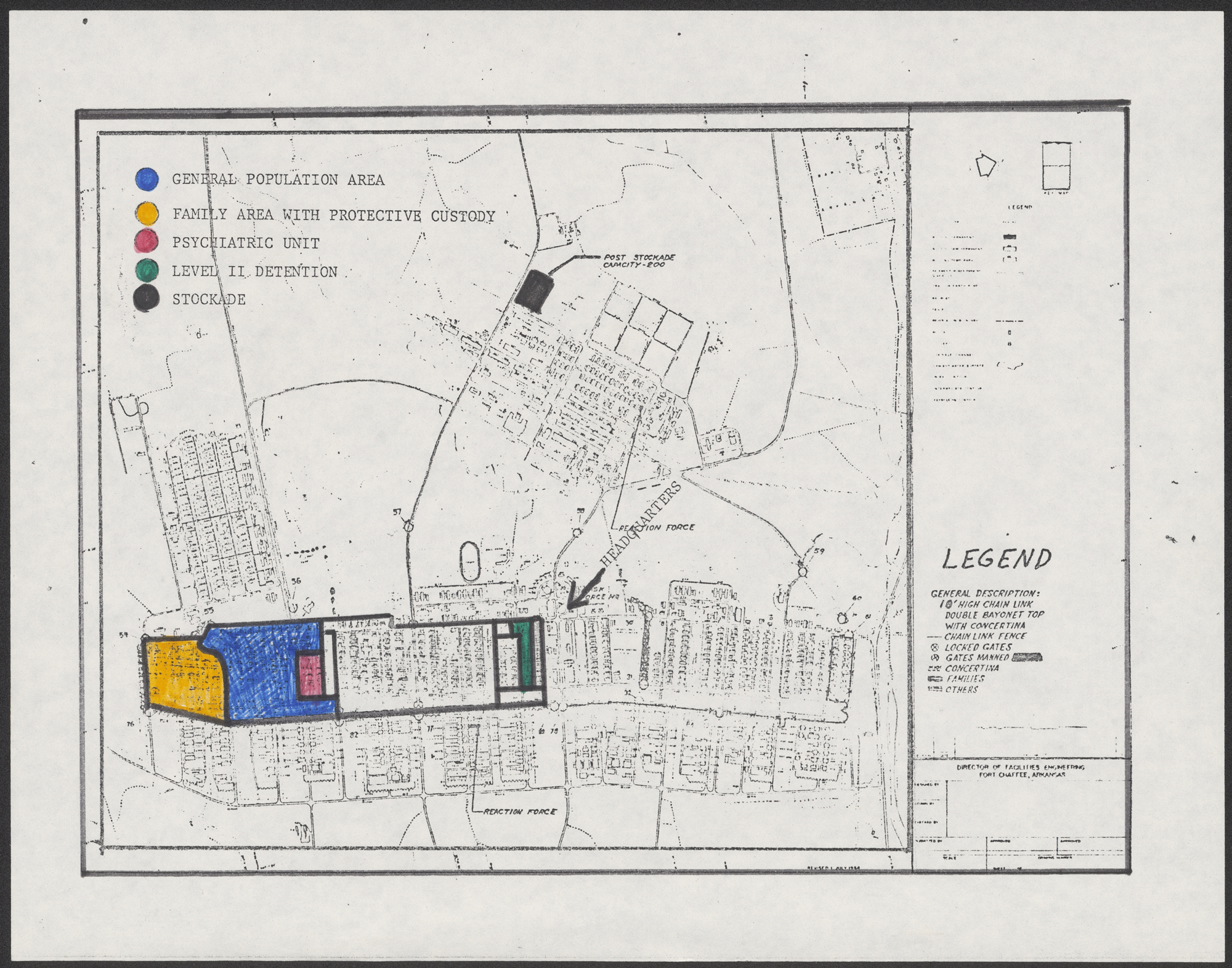Fort History
Fort Chaffee is an Army National Guard installation in Northwest Arkansas, just outside of Fort Smith. Originally named Camp Chaffee, it was established in 1941 as a U.S. Army base. Over the last 80 years, it has functioned as a military base for the U.S. Army and Army National Guard, a military training center, and a camp for refugees.
Fort Chaffee and the Marked Differences of Disparate Refugees
The South Vietnamese government collapsed on April 30, 1975, and the first wave of 100,000 refugees left the country. Approximately one-quarter of those refugees would end up at Fort Chaffee. Included in these numbers were high ranking South Vietnamese officials like Deputy Prime Minister Tra Van Don, Assistant to President Nguyen Van Thieu, Lieutenant General Dan Van Quant, and President Thieu’s Chief of Staff Le Van Khanh. By the end of 1975, all refugees had left Fort Chaffee and were resettled and relocated across the state and country. The base remained relatively quiet and became largely inactive until 1980.

Use During Cuban Refugee Resettlement
Just about a month after the first Cubans sought asylum in the Peruvian embassy in Havana, refugees from the Mariel Boatlift began arriving at Fort Chaffee to be held until they could be resettled. Between May and October of that year, over 19,000 refugees entered Chaffee and 90% were resettled after 5 months. Much like the previous wave of refugees from Southeast Asia, Fort Chaffee was designed to keep people inside. Access by outsiders was limited and access to the outside world by the refugees was even more limited. Language used to describe the Fort Chaffee and similar facilities played into public perception of the base. The Carter administration referred to these areas as “resettlement camps,” and other government officials often used the terms “processing” or “holding centers,” but heavy use of barbed wire and fencing likened these places more to being detention centers.
Refugee Uprisings & Civil Unrest
News stations had Fort Chaffee front and center in the summer of 1980. A week of protests at the fort over slow processing times and overcrowding eventually led to physical conflicts between refugees, Arkansas State Police, and Military Police. The first series of uprisings started on May 26th when 200 refugees walked out of an unlocked gate and made their way to the nearby town of Jenny Lind. Upon making their way to the town, local residents perched on rooftops fired rounds into the air. Refugees were eventually returned unharmed to Ft. Chaffee by Army officials. That night, hooded members of the Ku Klux Klan gathered outside of the fort with torches and signs reading, “Kill the Communist Criminals.”
On Sunday June 1, several hundred refugees began marching to the front gate of the base while shouting “Libertad!” A Little Rock news television crew (May have been KATV, waiting to confirm this) was inside Fort Chaffee during this event and had to take shelter as Cuban refugees marched towards Arkansas State Police. Refugees climbed over the front gate and tried to march up Arkansas Route 22 towards the nearby town of Barling. Arkansas State Police used billy clubs to turn them back with the refugees responding by throwing rocks and chunks of concrete at police. The police ended the stand-off after firing shotguns and pistols into the air, forcing the refugees back into the base. After the struggle, four refugees were admitted to a local hospital, three with gunshot wounds and one with a head injury. During the event, fires were set inside several buildings on the base. According to a Sebastian County Sheriff’s Office report, one of the refugees who made it outside the gate didn’t return for seven months, hitchhiking to Miami and then back to Ft. Chaffee in January 1981.